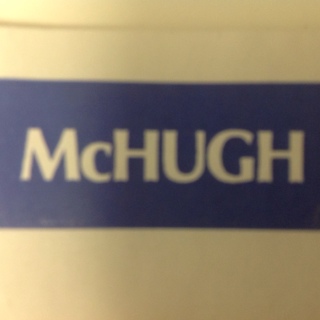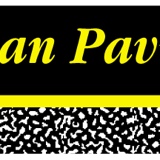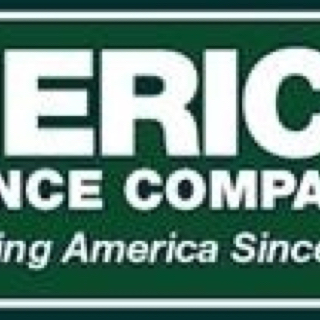Title Page
-
Annual Branch Safety Inspection
-
Conducted on
-
Prepared by
-
Location
-
Personnel
HEALTH EMERGENCY PREPARATION
-
Workers have been trained to respond to health emergencies and/or instructions are posted.
-
- YES
- NO
-
Employees have been trained in emergency evacuation procedures.
-
- YES
- NO
-
Emergency telephone numbers (9-1-1 or separate numbers for fire, ambulance, etc.) are posted.
-
- YES
- NO
-
First aid supplies are fully stocked and workers know where to find them.
-
- YES
- NO
-
First aid supplies are suitable for the type of injuries likely to occur in this workplace.
-
- YES
- NO
-
Workers have received "Right-to-Know" training on hazardous materials they are likely to encounter in their workplace and the use of and location of Safety Data Sheets.
-
- YES
- NO
-
Workers know where Safety Data Sheets are located.
-
- YES
- NO
HOUSEKEEPING
-
Work areas are clean and organized to prevent hidden hazards.
-
- YES
- NO
FIRE PREVENTION
-
Fire extinguishers are easily accessible and have been checked and serviced as necessary and are the appropriate type for the predominant fire hazard.
-
- YES
- NO
-
Fire exits are accessible and unlocked from the inside.
-
- YES
- NO
-
The path to fire exits is clear and clear of obstacles.
-
- YES
- NO
-
There is access to two fire exits from every point in the building.
-
- YES
- NO
-
Emergency exits are prominently posted.
-
- YES
- NO
-
Smoke alarms are installed and batteries were tested during this Inspection.
-
- YES
- NO
-
Sprinkler systems have been tested.
-
- YES
- NO
-
Flammable materials are safely stored in proper containers away from heat and sparks.
-
- YES
- NO
-
Anything that makes flames or sparks is shielded and the area is kept clear of trash, papers and other potential fuel.
FLOORS, ASILES, STAIRS AND ENTRYWAYS
-
Floors provide good traction and are free of cracks, bumps and other hazards that could cause slip, trips, or falls.
-
- YES
- NO
-
Workers are trained to clean up spills promptly with provided materials.
-
- YES
- NO
-
Aisles are well lighted and kept clear and free of tripping hazards.
-
- YES
- NO
-
Stairs are in good condition with no loose steps, provided with handrails and are well lighted.
-
- YES
- NO
-
Areas under stairs are clear and not used for storage.
-
- YES
- NO
LADDERS
-
Ladders are provided were needed.
-
- YES
- NO
-
Ladders meet construction standards and are in good condition.
-
- YES
- NO
-
Sturdy step ladders are provided if necessary.
-
- YES
- NO
MATERIAL STORAGE
-
Stored materials, products, and supplies are set in stable, balanced piles to a reachable height.
-
- YES
- NO
MACHINES AND EQUIPMENT
-
Machines and equipment are in safe operating condition.
-
- YES
- NO
-
Machines and equipment safety guards in place.
-
- YES
- NO
-
Workers are trained in the proper use and maintenance of each piece of equipment they use.
-
- YES
- NO
-
Machine and equipment leaks have been or are scheduled for repair.
-
- YES
- NO
HAND AND POWER TOOLS
-
Appropriate tools are provided.
-
- YES
- NO
-
Tools are in proper working condition.
-
- YES
- NO
-
Workers are trained in the proper use of and maintenance of tools they are using.
-
- YES
- NO
-
Electrical grounds are provided on power tools.
-
- YES
- NO
ELECTRICAL
-
Electrical cords and wiring are in proper condition (no cuts or frays).
-
- YES
- NO
-
Electrical cords are disconnected from power source at the end of each day.
-
- YES
- NO
-
Wires and cords are not routed over metal objects, through doorways or window openings.
-
- YES
- NO
-
Circuits are not loaded beyond their capacity.
-
- YES
- NO
-
There are no openings in electrical panels.
-
- YES
- NO
LIGHTING
-
Light is sufficient for each work area.
-
- YES
- NO
-
Emergency lighting for power outages is installed or supplied.
-
- YES
- NO
-
Emergency lighting was tested during this Inspection.
-
- YES
- NO
BACK INJURY PREVENTION
-
Workers are trained in back injury prevention.
-
- YES
- NO
-
Workers are trained to stretch and warm up to prevent sudden exertion of cold muscles.
-
- YES
- NO
-
Workers who request back supports are trained in the proper use of the back support prior to it's issue.
-
- YES
- NO
-
Workers are trained to use equipment for lifting or to ask for help when lifting heavy loads.
-
- YES
- NO
REPETITIVE MOTION INJURY PREVENTION
-
Workers who repeat the same movements throughout the day are instructed to take stretch and exercise breaks several times a day or when appropriate.
-
- YES
- NO
-
When possible, workers are given varied job assignments so they can avoid excessive stress on particular body parts while still remaining productive.
-
- YES
- NO
NEW EMPLOYEE SAFETY ORIENTATION
-
New employees have been given basic safety training as a part of new employee orientation.
-
- YES
- NO
COMPANY OWNED MOTOR EQUIPMENT AND VEHICLES
-
Each motor equipment and vehicle is provided with a daily vehicle inspection report to be completed by operator.
-
- YES
- NO
-
Each motor equipment and vehicle has a file for recording regular professional servicing and repairs.
-
- YES
- NO
-
Responsibility for regular inspection and servicing has been assigned to specific employees.
-
- YES
- NO
-
Employees are trained to report any safety or mechanical problems to the proper person.
-
- YES
- NO
-
Every motor equipment and vehicle receives regular professional servicing per manufacturers recommendations.
-
- YES
- NO
-
Vehicles used in long-distant trips are provided with safety equipment, including cell phone, flashlight, triangles, cones, and first aid kit.
-
- YES
- NO
-
If employees are required to change tires on equipment or vehicles, the following tools are required to be on vehicle; properly inflated spare tire, jack, lug wrench,
-
- YES
- NO
CRIME AND VIOLENCE PREVENTION
-
All out door lighting is operating properly (observed at night during inspection)
-
- YES
- NO
-
Operating telephones re accessible to all work stations.
-
- YES
- NO
-
Building space is arranged so visitors can be observed.
-
- YES
- NO
-
Buddy system or other method is in place for early and late night working hours.
-
- YES
- NO
-
Employees have received training on response to threats and violence.
-
- YES
- NO
-
Those employees that handle cash in the workplace and transit have received training.
-
- YES
- NO
-
Discreet storage is provided for employee's purses and other personal items.
-
- YES
- NO
SAFETY POSTERS AND REQUIRED NOTIFICATIONS
-
Are required safety posters and notices easily accessible to all employees.











